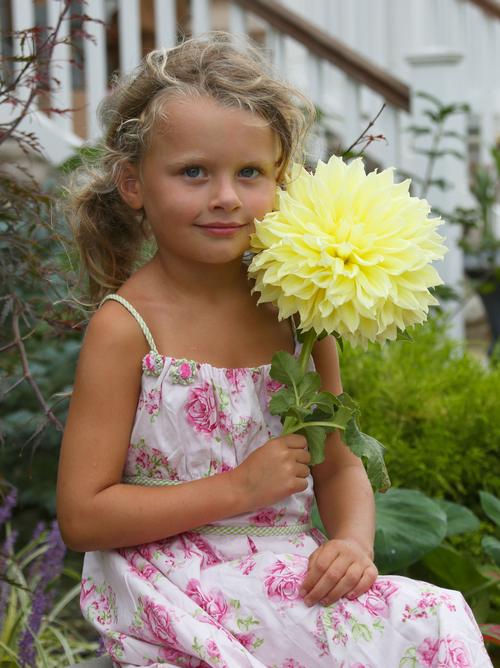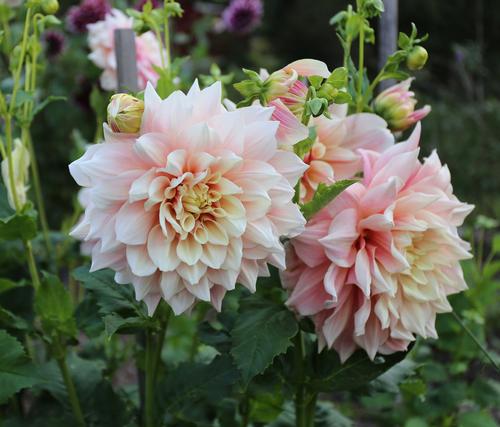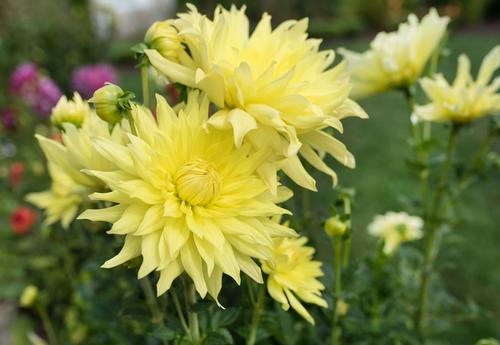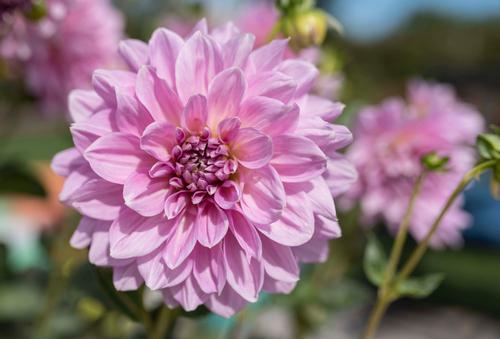The Largest Flowers of Summer
Dahlias never fail to impress. These flower-producing machines start blooming in midsummer, hit their stride in early August and then bloom their heads off, non-stop for 10 weeks straight. Though every type of dahlia has its own special charm, if you want the most direct route to WOW, you'll want to grow dinnerplate dahlias.
What Are Dinnerplate Dahlias?
Dinnerplate dahlias don't belong to an official class of dahlias. Rather, this is a term applied to any variety that produces big flowers measuring at least 8” across. The blossoms may have a classic, decorative form with perfectly cupped petals, such as Café au Lait and Thomas Edison. Or, the petals may be twisted as in Taihejo, quilled as in Avignon, or shaggy as in Penhill Dark Monarch.
A generation ago, dinnerplate dahlias were still somewhat of a novelty. Great for winning ribbons at the state fair, but not very popular with the average home gardener. Today, they are coveted by gardeners from coast to coast. They’re must-have flowers for weddings and the stars of extravagant summer bouquets.
Growing dinnerplate dahlias isn’t much different from growing any other type of dahlia. But to make sure these divas reach their full potential, it’s worth paying a little extra attention to planting, fertilizing, proper support and deadheading.

Planting Dinnerplate Dahlias
Dahlias should not be planted outdoors until there’s no danger of frost. If you garden in the northern half of the country, consider starting your dinnerplate dahlias in pots before transplanting them out into the garden. The sooner you can get these plants to maturity, the sooner they’ll start producing flowers. Giving them a head start means you can start picking flowers in mid-July rather than early August.

Dinnerplate dahlias deserve a prime location with all day sun and the best soil you can give them. Well-drained soil is essential. If it's heavy and wet, it will stunt their growth and invite disease and insect problems. Dahlias thrive in raised beds and vegetable gardens. In fact, if you treat dinnerplate dahlias like beefsteak tomatoes, you’ll be wildly successful.
It takes a big plant to producing such impressive flowers, so you can expect most dinnerplates to grow at least 4 feet tall. Their shrub-like size means the best place to plant them is at the back of a flower bed or in a cutting garden.

Watering and Fertilizing
Dahlias grow best in good soil that is high in organic matter. Before planting, enrich the soil with compost and an all-purpose fertilizer, following package directions. Dinnerplate dahlias respond well to being fertilized regularly. Wait until the plants are a foot tall, then start feeding them at least once a month with a liquid all-purpose fertilizer, following the recommended dilution rates.
Dinnerplate dahlias should get about an inch of water per week. Infrequent deep watering is best. Try to target the root zone. Keeping the foliage as dry as possible will help deter slugs, snails and earwigs, as well as foliar diseases.

Supporting Dinnerplate Dahlias
Dahlias have somewhat brittle stems than can be damaged by heavy wind and rain. With dinnerplates, the weight of the big flower heads (especially when waterlogged) can be enough to pull over an entire plant. Unless you're in a very sheltered location, it's important to stake the plants early and tie them in as they grow. You can read about a number of staking options HERE.

Picking and Deadheading
As with other dahlias, the more flowers you pick, the more you will get. Visit your dahlias at least a couple times a week, and bring the following three things with you every time: sharp scissors, a clean bucket with some water in the bottom for keepers, and a larger bucket, tubtrug or wheelbarrow for collecting spent blooms.
Cut your dahlias as soon as they open and before the back petals begin to soften. Try to cut nice, long stems, even when it means removing buds. Over time, this encourages the plant to produce longer stems.

Remove spent flowers in the same way, cutting a full stem rather than just nipping off the flower. Make sure to remove every flower that has passed its prime. Spent flowers collect moisture and become a home for pests and disease. This is especially true with the large blossoms of dinnerplates.


